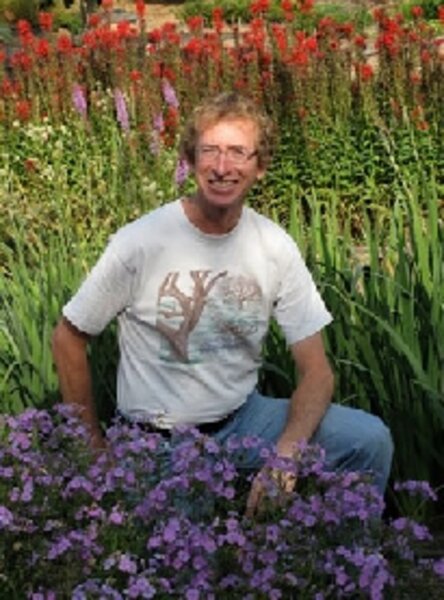Native plants encourage wildlife in the garden
Loading...
Flower fanciers have generally forsaken native plants over the years for the fashionable and the flashy, but the robust perennials are quickly becoming garden chic and the center of an ongoing conservation campaign.
The handbook of the natural landscape movement may be Douglas Tallamy's "Bringing Nature Home: How Native Plants Sustain Wildlife in Our Gardens" (Timber Press), which brings into sharp focus the relationships between plants and wildlife.
"Plants generate the food for all the terrestrial life on the planet," said Dr. Tallamy, a professor and chair of the department of entomology and wildlife ecology at the University of Delaware, in an interview.
"Insects and birds are disappearing because we're starving them with the wrong kinds of plants when we landscape," he said.
It's understandable that people want new and different kinds of plants for their gardens, but alien species don't contribute much, if anything, toward the care and feeding of wildlife, he said.
"Insects are not adaptable. Their physiology is locked into the plants with which they've co-evolved," Tallamy said. "It's like the monarch butterfly gets its nourishment primarily from milkweeds. If we start spraying all the milkweeds, the monarchs can't simply go off and start feeding on oak trees."
Miriam Goldberger, who with her husband, Paul Jenkins, owns and operates Wildflower Farm Inc. near Coldwater, Ontario, puts it another way: "A lot of my hybridized plants are like junk food compared to the natives. They don't have much dietary value."
But one person's wildflower is another person's weed. Time for some definitions:
"Natives" are considered plants indigenous to North America before European settlement.
"Weeds" are any plants growing out of place.
A "forb" is a wildflower that grows without human involvement.
"Naturalized aliens" are plants that have taken hold in certain areas but that should be avoided because they crowd out and contaminate native gene pools. (Queen Anne's lace, chicory, and oxeye daisy are some naturalized aliens.)
"Common milkweed is on Ontario's noxious weeds list, yet several (provincial) departments purchase milkweeds from us to support the monarchs," Ms. Goldberger said. "This weeds-wildflower debate needs a little more thinking and a little more homework as people gain knowledge about natural relationships."
Some things to consider when buying and growing native plants:
– Beware the inexpensive "show and go mixes" that bloom heavily for a year but then die back because they contain so many annuals.
– Shop for wildflowers rather than dig them up. Plants taken from the wild "generally don't survive," Goldberger said. "Better to get nursery-grown natives that do well in habitats and hardiness zones matching your own."
– Choose bare-root plants or cuttings if you want the fast and easy. Go with seeds if you have large areas to cover. "Remember that these are perennials, so it may take some time to get them going," said Bill Carter, president of Prairie Moon Nursery near Winona, Minn.
"First-year growth (from seed) may not be much at all or very slow in coming," he explained. "Many of these plants need two or three years to reach blooming size, but really take off once established."
– Naturalized gardens may look more disheveled than formal flower beds, especially after the flowers fade, but don't be quick to remove the spent plants. Birds will eat their seeds; insects will shelter in their hollow stalks.
"I got into growing and selling natives because they're so beautiful, so low maintenance and drought tolerant," said Goldberger, whose sales are growing at a rate of 20 percent to 30 percent per year. "It's even better now because I can see the wider view."
For lists of specific plants that attract butterflies, hummingbirds, and bees, click here.
For more about gardening with native plants, see this US Department of Agriculture website.
For planting suggestions, tap the Prairie Moon Nursery reference guide.
Editor’s note: For more on gardening, see the Monitor’s main gardening page, which offers articles on many gardening topics. Also, check out our blog archive and our RSS feed. You may want to visit Gardening With the Monitor on Flickr. Take part in the discussions and get answers to your gardening questions. If you join the group (it’s free), you can upload your garden photos and enter our contests.





